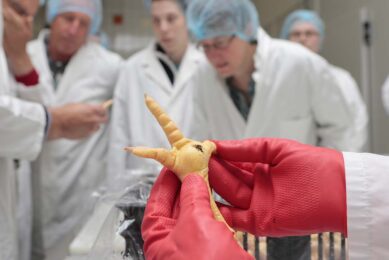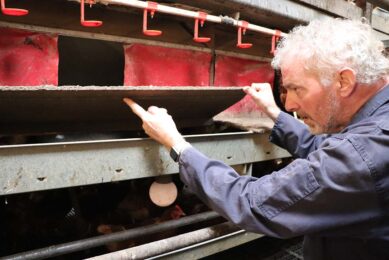Veterinary drugs: health for poultry and humans
Proper use of veterinary drugs is essential for optimising animal health status and improving animal productivity. Veterinary drugs have various uses such as disease prevention, therapeutic treatment of disease and for growth promotion.
Facts:
Proper use of veterinary drugs is essential for optimising animal health status and improving animal productivity. Veterinary drugs have various uses such as disease prevention, therapeutic treatment of disease and for growth promotion.
However, farmers should take several considerations into account when choosing veterinary drugs, namely indication, registration number, composition and directions for use.
Antibiotics are widely used by farmers and are considered a miracle; effective in fighting all kinds of infectious diseases plus as a growth promoter.
Application of veterinary drugs in food producing animals must be done carefully to prevent potential risks to public health in relation to possible residues in animal products such as meat, milk and eggs.
Problem:
Recently there have been poultry problems in developing countries, specifically in Indonesia, this has been due to tough competition in selling veterinary drugs. A lot of animal health companies in Indonesia (local and international) compete to sell their products. This leads to the misuse of veterinary drugs by the poultry farmers especially in commercial broiler and layer chicken.
This misuse happens because the farmers rarely adhere to the directions for use. Plus the technical support of animal health companies often neglect after-sales services, such as giving good information about the proper use of the drugs.
This problem is so dangerous because the misuse of veterinary drugs, such as over-dosing, will directly affect the chickens and have a potential risk to humans because of residues that can end up in final products.
Solution:
I think the technical support of the pharma-companies should not only think about profits and bonuses when selling their products, but also invest in after-sales services.
This is very important because the majority of poultry farmers in developing countries are people that have little education and easily administer medicines the wrong way.
If you have experienced the same in your country, reply to this blog and tell me how you solved this problem.
Join 31,000+ subscribers
Subscribe to our newsletter to stay updated about all the need-to-know content in the poultry sector, three times a week. Beheer
Beheer








 WP Admin
WP Admin  Bewerk bericht
Bewerk bericht